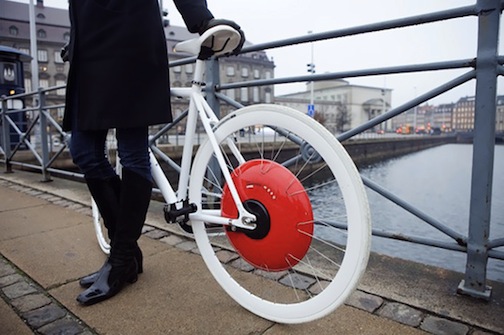
Max Tomasinelli
It may look like an ordinary bicycle wheel with an oversized center. But it’s packed with electronic gadgets and functions to help the cyclist keep track of their fitness, friends, smog and traffic. It can store energy every time the rider brakes and then give that power back to provide a boost when going uphill or to add a burst of speed in traffic.
Designed by researchers at MIT’s Senseable City Lab, it was presented at the Copenhagen Conference on Climate Change last December. And now it has won the U.S. heat of the James Dyson Award, an international design award.
“The Copenhagen Wheel is a 21st century upgrade to the bicycleâ€, Sir James Dyson, the founder of the award, told London’s Metro newspaper.
“The wheel uses a technology similar to the KERS (Kinetic Energy Recov-
ery System), which has radically changed Formula One racing over the past couple of years. When you brake, your kinetic energy is recuperated by an electric motor and then stored by batteries within the wheel, so that you can have it back to you when you need itâ€, explains professor Carlo Ratti, Director of the MIT Senseable City Lab.
To put it in a nutshell, the main goal of the Copenhagen Wheel is to promote cycling by extending the range of distance people can cover and by making the whole riding experience smoother.
According to Ritt Bjerregaard, Lord Mayor of Copenhagen, “our city’s ambition is that 50% of the citizens will take their bike to work or school every day. So for us, this project is part of the answer to how can we make using a bike even more attractive.”






The Guardian newspaper has published a critique of the Copenhagen Wheel: http://www.guardian.co.uk/environment/green-living-blog/2010/aug/19/copenhagen-wheel-cycling-bike